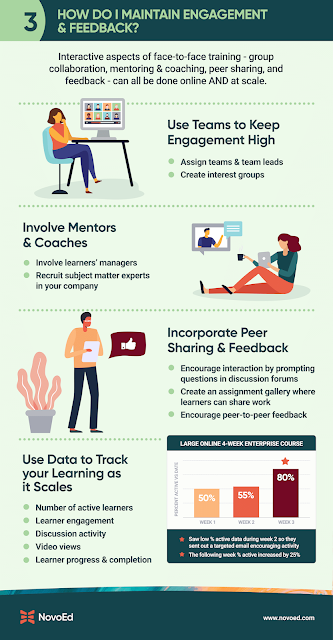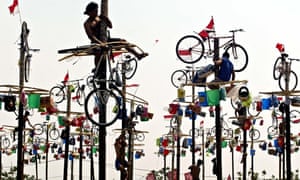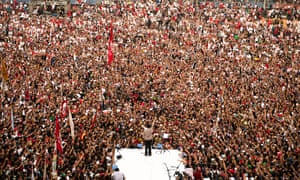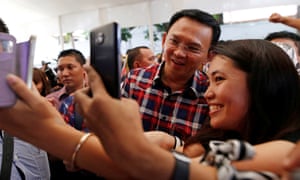copy dari WA Group SATU HATI
Menyingkap Tabir HOAX Morowali.
Adalah PT Indonesia Morowali Industrial Park (IMIP) yang disebut-sebut dalam hoax Morowali tersebut. Dari yang awalnya sebatas isu Tenaga Kerja Asing (TKA) asal Cina, lalu berkembang lebih liar lagi semisal adanya larangan beribadah (sholat), dan larangan penggunaan jilbab untuk para karyawati yang beragama Islam.
Entah apa tujuan dari isu-isu yang dibuat oleh oknum tidak bertanggung jawab tersebut, tapi yang jelas, isu tersebut harus dijernihkan, dan diluruskan beritanya. Salah satu caranya adalah dengan melakukan fact check ke lapangan, atau observasi langsung ke sumbernya, dan itulah yang saya lakukan bersama beberapa kawan aktivis.
Dari hasil penelusuran yang kami lakukan di IMIP, baik melalui pengamatan di area kerja, maupun audiensi dengan banyak pihak, mulai dari para pekerja hingga ke jajaran direksi, maka saya sampaikan beberapa poin isu dan faktanya sebagai berikut :
1) Isu soal banyaknya TKA asal Cina.
Fakta: Jumlah TKA di IMIP adalah 3.148 orang dari total karyawan yang berjumlah 30.428. Itu artinya, jumlah TKA hanya sekitar 10% dari keseluruhan karyawan, dan itu jelas tidak melanggar batas ketentuan peraturan dan perundang-undangan yang berlaku.
2) Isu soal adanya pelarangan beribadah (sholat) bagi pekerja.
Fakta : Perlu diketahui bahwa di dalam kawasan IMIP itu terdapat 4 masjid dan 20 mushola yang setiap bulan mampu mengumpulkan dana infak jamaahnya hingga 200 juta rupiah.
Nah, bagaimana mungkin dana infak sebesar itu dapat terkumpul kl tidak ada jamaah yg sholat di sana ?
3) Isu soal pelarangan jilbab.
Fakta: Para pekerja wanita yang kami temui membantah isu tersebut, dan kami juga melihat langsung bahwa banyak sekali pekerja wanita yang berjilbab. Semua itu bisa dibuktikan melalui foto-foto yang menyertai tulisan ini.
4) Isu soal demo TKA.
Fakta : Tidak ada demo TKA, yang melakukan demo kemarin adalah para pekerja lokal terkait permintaan kenaikan gaji pokok. Terkait hal ini, jajaran direksi mengabulkan angka maksimal kenaikan sebesar 13% dari 20% yang dituntut pekerja lokal.
5) Isu soal TKA yang dipekerjakan pada jenis pekerjaan kasar.
Fakta : TKA asal Cina yang berada di sana hampir seluruhnya bekerja sebagai operator alat yang memang berteknologi asal Cina. Mereka sekaligus bertindak sebagai trainer bagi pekerja lokal dalam rangka alih teknologi.
Makanya, dari waktu ke waktu jumlah TKA akan semakin berkurang, sehingga pada tahun 2023 diproyeksikan hanya akan ada 5% (maksimal) TKA dari total karyawan 100.000 orang.
6) Isu Jokowi mengundang Cina untuk menguasai aset Indonesia (IMIP)
Fakta : IMIP berdiri pada 19 September 2013 yang merupakan tindak lanjut dari penandatanganan perjanjian B to B di hadapan Presiden SBY dan Presiden Xi Jinping di hotel Shangrila Jakarta pada 3 Oktober 2013, yang sekaligus dalam rangka mematuhi UU Nomor.4 Tahun 2009 tentang Mineral dan Batubara yang menetapkan larangan ekspor mineral mentah mulai 12 Januari 2014.
Nah, semua itu terjadi sebelum era pemerintahan Presiden Jokowi.
7) Isu TKA digaji lebih tinggi dari TKI.
Fakta : IMIP adalah perusahaan profesional di bidangnya, dan sebagaimana perusahaan-perusahaan lain, mereka memiliki standar pengupahan yang merujuk kepada aturan ketenagakerjaan, termasuk di dalamnya standar keahlian dan jabatan.
Di IMIP gaji awal untuk lulusan SMA ada di kisaran angka 4,2 juta, masih sedikit lebih tinggi dari upah rata-rata nasional yang berada di angka 3 jutaan.
8. Isu soal TKA Cina yang disembunyikan bila ada kunjungan pihak luar ke IMIP.
Fakta : Sistem kerja di IMIP itu dibagi ke dalam 3 shift karena beroperasi penuh 24 jam, dan sementara IMIP sendiri terdiri dari beberapa perusahaan di dalamnya. Jumlah TKA yang sekitar 3 ribuan itu hanya sekitar seribuan dalam tiap shiftnya, dan itupun terbagi lagi ke dalam beberapa perusahaan.
Jadi bukanlah hal yang mengherankan ketika anda berkunjung ke IMIP, mengelilingi area kerjanya, anda akan jarang berjumpa dengan mereka, padahal area kawasan IMIP itu luas banget sekitar 2.000 hektar.
9) Isu soal adanya bahan makanan yang tidak layak makan pada menu makan karyawan.
Fakta : Bagian Dapur di IMIP itu besar dengan peralatan-peralatan penunjang yang lengkap semisal lemari pendingin untuk menyimpan daging, buah atau sayur-mayur. Jadi tidak masuk akal kalau mereka menggunakan bahan-bahan yang telah rusak.
Sebagai catatan tambahan :
1. Keberadaan IMIP juga membawa dampak keuntungan bagi masyarakat sekitar. Misal, saat ini banyak warga yang memiliki kontrakan atau tempat kost bagi karyawan IMIP dengan jumlah sewa sebesar 1jt/bulan. Sewa yg mahal sebetulnya, jika mengingat fasilitas yang tersedia di sana.
2. IMIP juga membangun fasilitas kesehatan berupa Poliklinik yang melayani masyarakat umum dengan cuma-cuma alias gratis. Anggaran yg disedikan IMIP untuk Poliklinik ini mencapai 1,2 sampai 1,4 milyar perbulannya, dimana 700juta adalah dana yg dikeluarkan untuk pengadaan obat2an bagi hampir 400 pasien perhari.
3. Pajak perusahaan yang diterima negara setiap tahun dari IMIP juga besar sekali, yaitu 4 trilyun rupiah (2018), dan estimasi pada 2019 akan berkisar di angka 4,8 trilyun rupiah.
4. IMIP juga merupakan kawasan industri yang mandiri. Ini bisa dibuktikan dengan adanya fasilitas pendukung kawasan seperti pelabuhan khusus, bandara khusus, pengolahan air, pabrik oksigen, dan PLTU sendiri, dan smelter
5. IMIP juga bekerja sama dengan Politeknik Industri Logam Morowali yang pendiriannya atas inisiasi Kementrian Perindustrian, dimana mahasiswa pada semester 4 & 5 akan melakukan magang di IMIP atau selama 1 tahun penuh.
Gimana, masih mau percaya hoax ?
Kpn Kita bisa maju.?
Ketinggalanlah selamanya klu dibiarkan Pengkhianat2 itu terus tebar Teror.🇮🇩🙏
Edison Abdulaziz



















